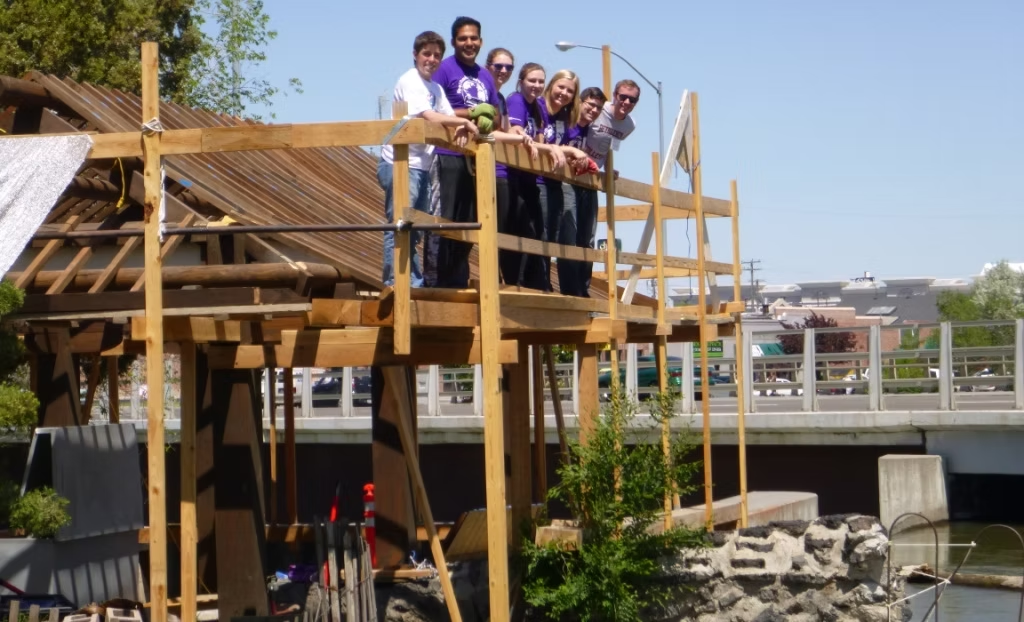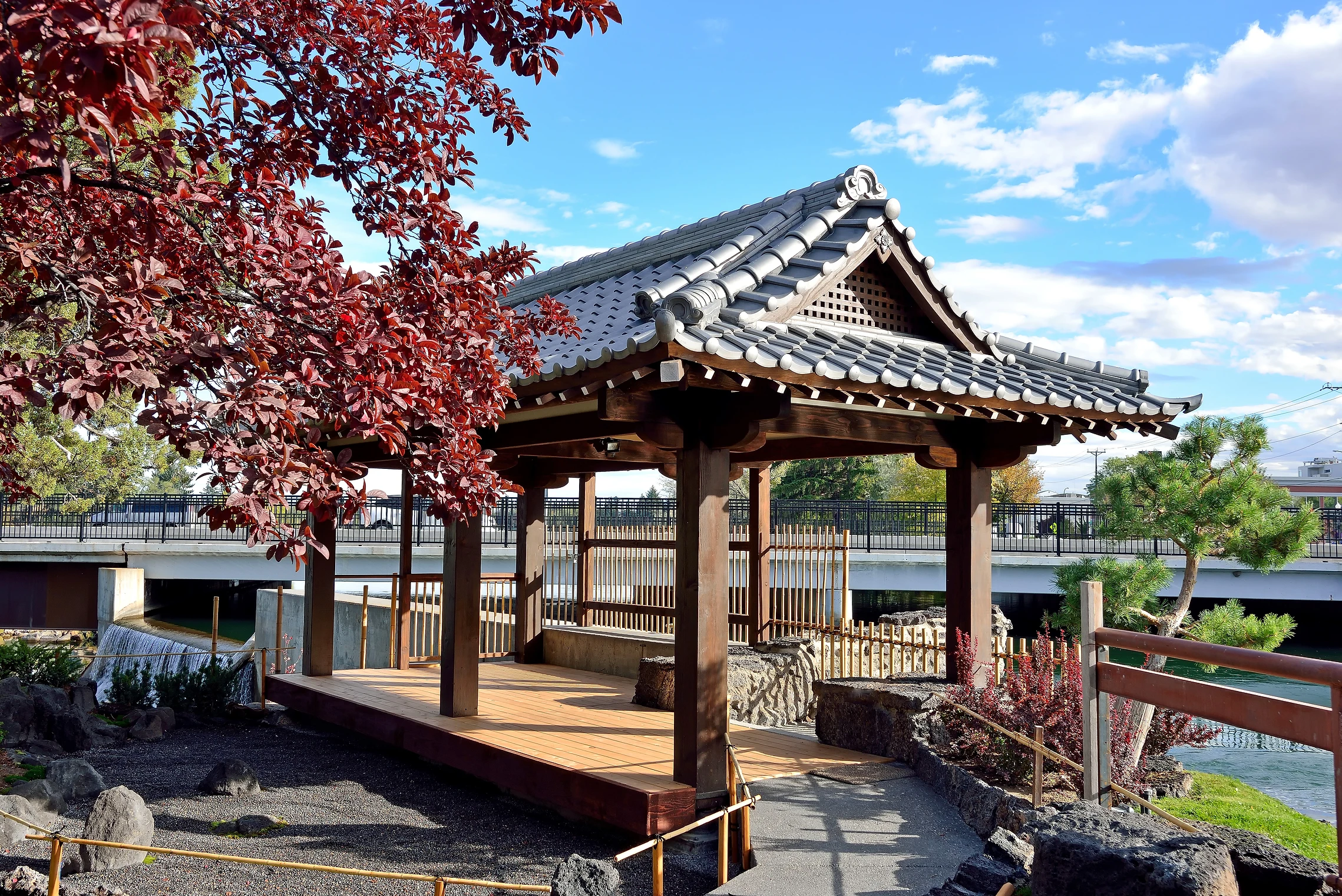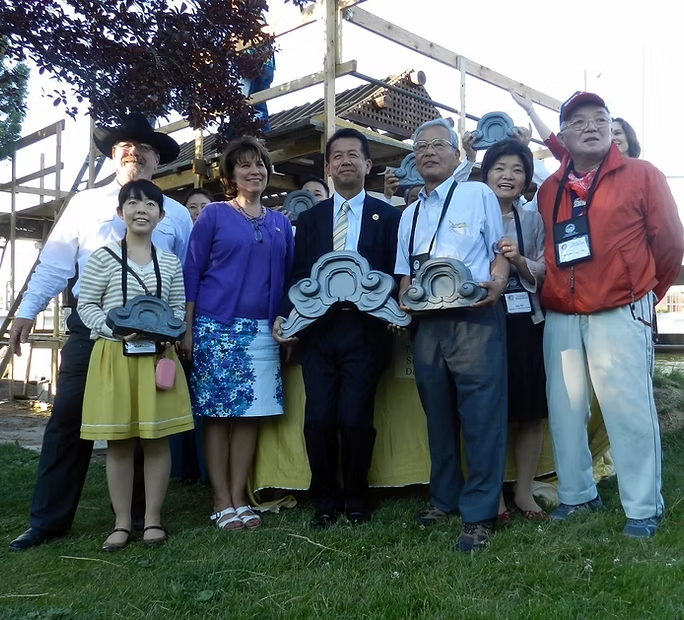Friendship Garden and Japanese Tattooing in the Sister City
- Jason Sexton
- Feb 18
- 5 min read
Updated: Feb 21
Japanese Friendship Garden and Japanese Tattooing in downtown Idaho Falls. Exploring the history of the garden, The Sister Cities and the culture of Japanese tattooing known as Irezumi.
The Friendship Garden
The Japanese friendship garden in downtown Idaho Falls is a serene and beautifully landscaped area that serves as a testament to the enduring bond between the United States and Japan. This garden not only offers a peaceful retreat for visitors seeking solace from the hustle and bustle of everyday life, but it also invites exploration into its rich and multifaceted history, which is deeply intertwined with the cultural exchanges that have occurred between the two nations over the years. Established as a symbol of friendship, the garden features traditional Japanese elements such as koi ponds, carefully pruned bonsai trees, and elegant stone lanterns, all of which reflect the artistry and philosophy of Japanese landscape design. Each element within the garden is meticulously crafted to create a harmonious environment that encourages contemplation and connection with nature. As one strolls through the winding paths, the tranquil atmosphere is enhanced by the soothing sound of flowing water from the streams and ponds, along with the gentle rustle of leaves in the breeze, creating a perfect setting for reflection, meditation, and appreciation of the natural world around us.

Sportsman Park, circa 1940. | Courtesy the Museum of Idaho
How Friendship Garden developed
"Sportsman Park, circa 1940. Four zoo cages are visible on the right. Keefer’s piers are located between the two sets of fish runs. The upper walkway ran from the swinging bridge to the area behind the cages. Sections of the foundations of the walkway can still be seen under the bonsai tree next to the Kanji Stone on the upper level of the garden. | Courtesy the Museum of Idaho
The Japanese Friendship Garden area has been a place where families gathered for generations. Around 1900, local women formed the Village Improvement Society. The best-known VIS activity was city beautification creating “oases of green in the brown desert”. In 1904, they purchased the property on both sides of the river for $1. This was the true beginning of the greenbelt.
Due to the leadership of Mayor Joseph Clark, a larger power plant was built in 1910 resulting in the creation of the island as we know it today. The Sportsmen’s Association built a fishery and continued improving the park area in 1923. By the summer of 1934, hundreds of people were visiting the island each day.
Fast forward to the 1980s when the Idaho Falls Rotary Club started formal plans for the development of the current greenbelt. In 1991, the Rotary Club built the current Taylor Bridge replica, blasted out rocks, rerouted water channels, planted new trees and added another set of stairs. These activities led up to the big push in 2011 when the Friendship Garden was born.
In 2011, the Sister City Association, Bonneville County Master Gardeners, and local volunteers decided to build a Japanese Friendship Garden on the island, formerly known as Sportsmen’s Park. This garden commemorated the 30th anniversary of Idaho Falls’ association with its Japanese sister city, Tokai Mura. The beautiful stone lantern in the garden was given to Idaho Falls by Tokai Mura in the early 1980’s. Due to the destructive and deadly earthquake and tsunami that occurred in Japan in March 2011, the Friendship Garden also became a tribute to the victims of that tragedy.
New work began in May 2011, with volunteers reconstructing the wooden steps, clearing brush and removing diseased trees. Funding came from, and continues to come from, grants and donations, both public and private. Most of the plants came from the gardens of the volunteers. Local nurseries and garden stores also donated plants or needed items.
In 2012, the Civitans, built a platform over the old fish hatchery. Local business groups helped in the effort by clearing brush and tree stumps from the hillside, raking, and clearing the area of debris. Hotsy, a local cleaning service, removed years of graffiti and paint from the rocks and piers. By 2014 the Pavilion was built, and the “Adopt a Brick” fundraising campaign began. Continued work included building the bamboo fence (2016), adding aggregate walkways and paths (2017) and creating the “Mountain” landscape in front of the Pavilion and completing the Zen Garden." East Idaho News
The pavilion cunstrution and The Sister City delegation from Tokai-mura, Japan
The Pavilion and Sister City Partnership
"Idaho Falls is sistered with Tokai Mura, Japan as part of the international Sister Cities Program to promote international understanding and friendship.
In odd-numbered years, a Tokai Mura student delegation visits and stays with American students in Idaho Falls for a week, while an Idaho Falls adult delegation visits Tokai. In even-numbered years, students from Idaho Falls visit Tokai while the Japanese adult delegation visits Idaho Falls.
Why Tokai Mura? Idaho Falls is similar to Tokai Mura as both are agricultural areas specializing in potatoes and both are located near nuclear research facilities. Hence, our economies and agrarian/technical cultures are similar in a wordly sense.
A couple of decades ago, Tokai Mura donated a large stone lantern to Idaho Falls. It was eventually placed in the city park on the island south of Broadway Bridge. Several years ago, Clarke Kido started a project to landscape near the lantern. Judy Sydel and Mike Zaladonis joined in and this grew into a Japanese Garden built by volunteer gardeners.
Paths, bushes, trees and a large deck for public gatherings were installed over a few years. The Japanese garden has become a popular destination for tourists, photographers, and weddings because of its beauty."
To get involved or become a volunteer https://zaladonis.wixsite.com/japanesepavilion/contact-us
Exploring Cultural Narratives/ Japanese tattooing in the Sister City
Friendship Garden and Japanese Tattooing
In addition to the garden itself, there is a wealth of knowledge to be uncovered about Japanese culture, which encompasses a wide array of traditions, customs, and art forms that have evolved over centuries. One of the most fascinating aspects of this culture is the practice of Japanese tattooing, known as Irezumi or Wabori. This ancient art form has a rich history that dates back centuries and has undergone significant evolution over time. Traditionally, Irezumi was used to signify social status, bravery, and protection, often featuring intricate designs that tell a story or represent various elements of Japanese mythology and folklore. The tattoos are characterized by their vibrant colors, detailed imagery, and the use of symbolic motifs such as koi fish, dragons, and cherry blossoms, each carrying its own unique meaning and significance. The artistry involved in Irezumi is not merely skin deep; it reflects the philosophical and aesthetic principles of Japanese culture, emphasizing the beauty of impermanence and the connection between the individual and nature.
Tattoos by Jason Sexton and Cherise Farmer of Lucky Koi Tattoo
In contemporary society, Irezumi has transcended its traditional roots, gaining recognition and appreciation in the global art scene, where it is celebrated for its intricate craftsmanship and cultural depth. However, it still carries a complex relationship with societal perceptions, as tattoos in Japan can often be associated with the yakuza, or organized crime, leading to a dichotomy between the appreciation for the art and the stigma attached to it. This duality highlights the ongoing conversation about identity, art, and societal norms, making Irezumi a compelling subject for both artists and art lovers alike.
Lucky Koi Tattoo
Friendship Garden and Japanese Tattooing in the Sister City. Visitors of the garden may also be interested in paying a visit to Lucky Koi Tattoo shop, a local establishment that showcases the talents of artists who have made Japanese tattooing their primary focus. This tattoo shop holds a deep commitment to the traditions and artistry of Irezumi, offering clients the opportunity to engage with this rich cultural practice in a meaningful and respectful way. The garden stands as a bridge between these two cultures, inviting all who enter to appreciate the beauty and complexity of Japanese heritage, while also celebrating the enduring friendships that can be cultivated through shared experiences, mutual respect, and a genuine curiosity about one another's traditions and stories.
Utagawa's Lifetime Masterpiece, from the Japanese version of the Shuihu Zhuan


















Hozzászólások